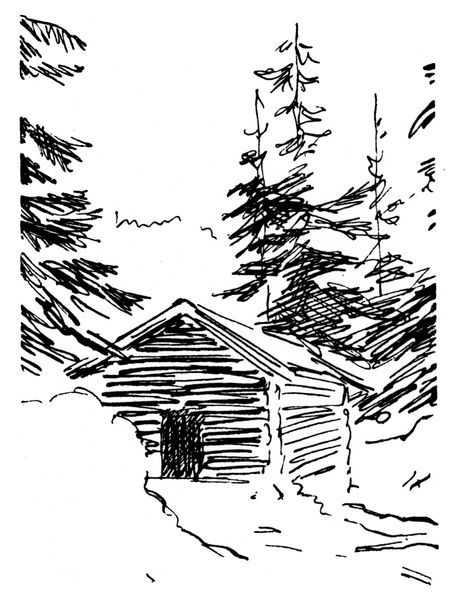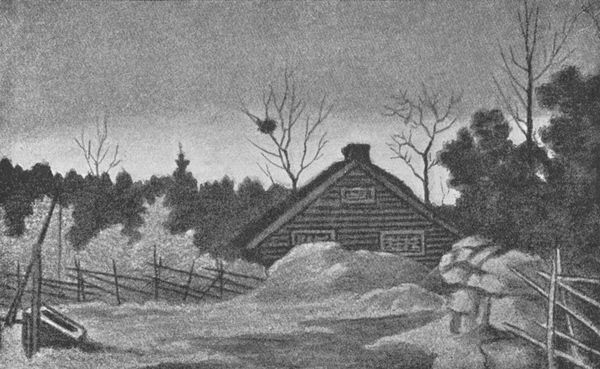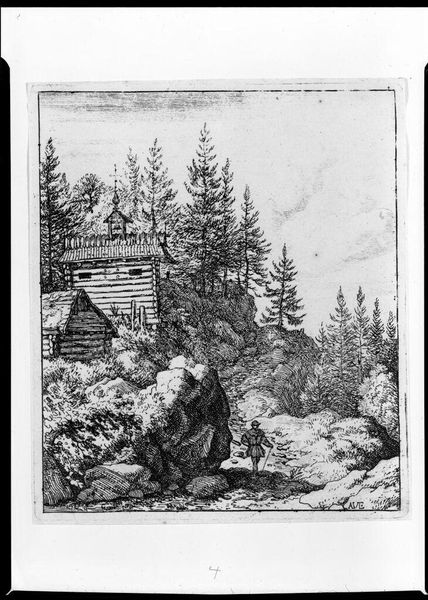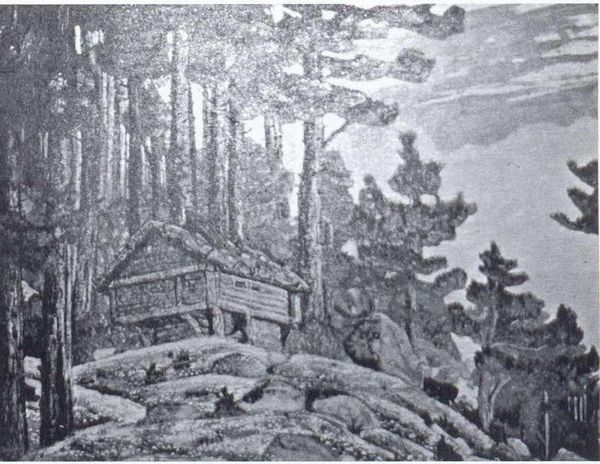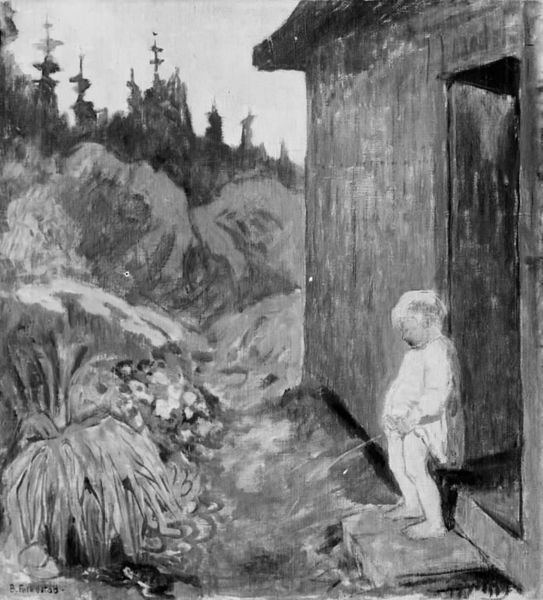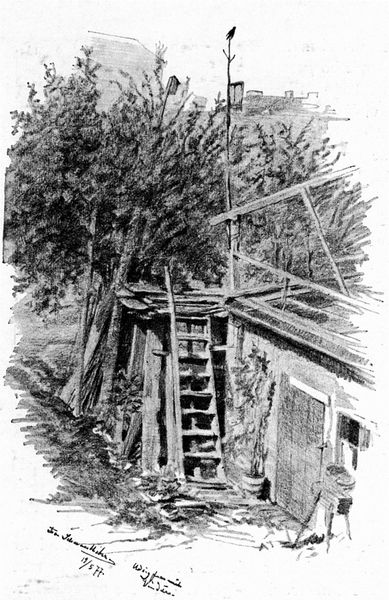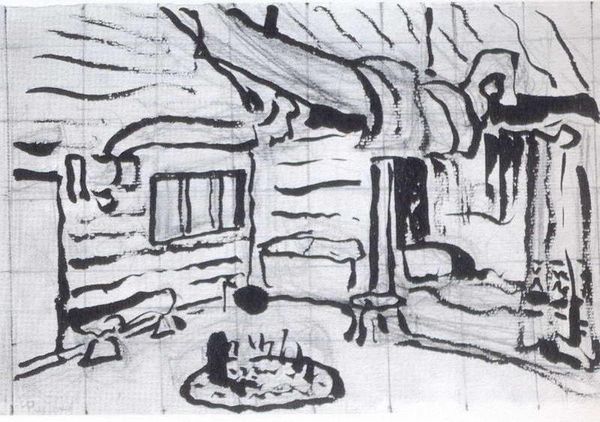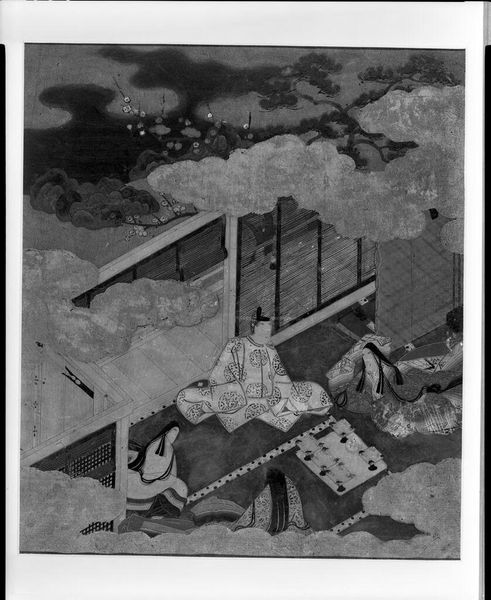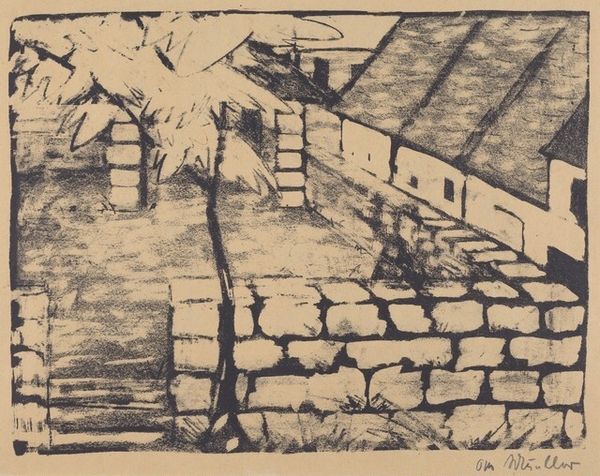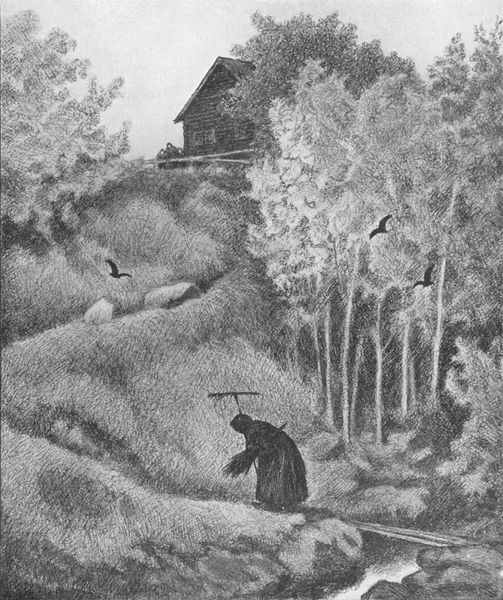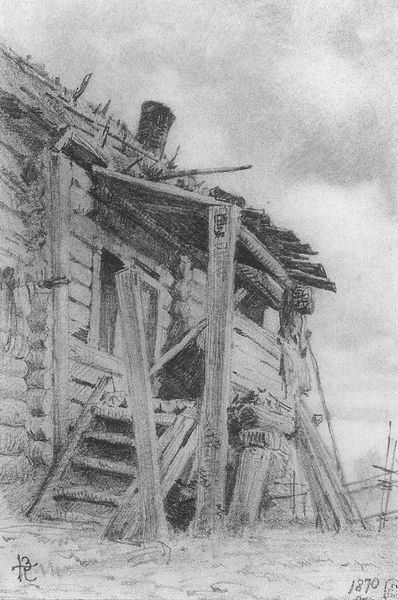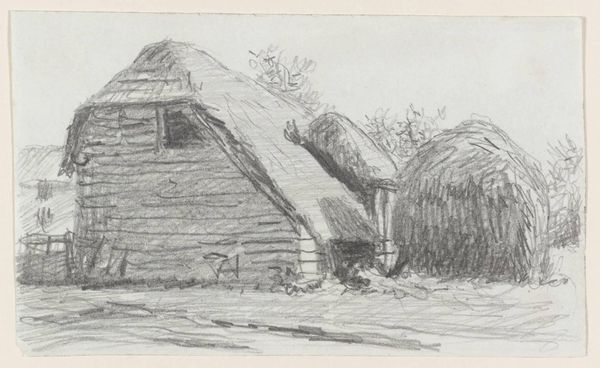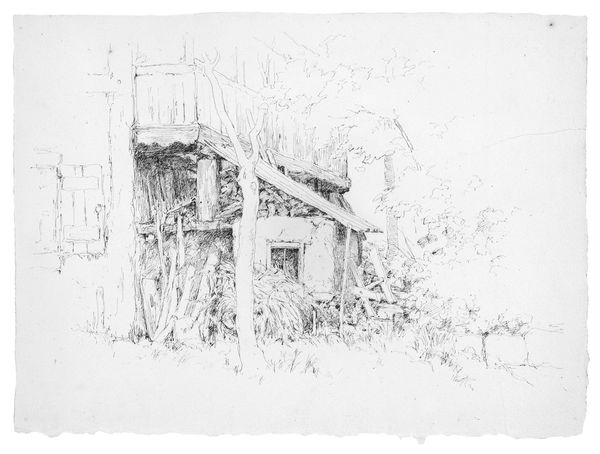
drawing, print, ink, charcoal
#
drawing
# print
#
landscape
#
charcoal drawing
#
ink
#
pen-ink sketch
#
symbolism
#
charcoal
#
northern-renaissance
#
monochrome
Copyright: Public domain
Editor: This is "Hun Soper Hver Krok," created around 1900 by Theodor Severin Kittelsen. It's a drawing or print, rendered in ink and charcoal. The image gives me a sense of stark isolation, a lonely cabin amidst a snowy landscape. What are your initial thoughts on the composition of this piece? Curator: The piece, fundamentally, is a study in contrasts, wouldn't you agree? Observe the stark interplay of light and shadow, achieved through Kittelsen’s masterful manipulation of charcoal and ink. The cabin’s geometric structure opposes the organic forms of the snow-laden landscape, creating a visual tension that is palpable. Note how the artist employed linear perspective to guide the eye toward a somewhat ambiguous dark space behind the cabin. The texture, visible in the grain of the wood and the granular snow, enhances its tactile quality. Editor: The visual tension is certainly strong. What’s the significance of the ambiguous dark space? Is that just compositional or something more? Curator: The dark space operates on multiple levels. Compositionally, it serves as a counterweight to the illuminated snow and the defined structure of the cabin. This creates balance, certainly, but it introduces an element of the unknown. Philosophically, in conjunction with the Northern Renaissance style of the work, it begs a semiotic reading. In these traditions darkness is a key characteristic used to portray unknowable nature. Editor: That is interesting, and it adds a layer I had missed. Is it the ambiguity you describe why this composition is so captivating? Curator: It's the ambiguity combined with the very intentional composition. How negative and positive space interact, for example. Consider too the artist’s mark-making; it is not simply representational, but expressive. Editor: Looking at it again with fresh eyes, it makes me see it in a completely new way. Thanks! Curator: Indeed. Understanding the formal qualities of a piece like this allows a more nuanced reading, deepening one’s appreciation.
Comments
No comments
Be the first to comment and join the conversation on the ultimate creative platform.
